Yes, we know January is more than halfway over and it’s a bit late for yet another compilation of Top Tens. But we’ve been busy speaking and planning the next year of this site. Hopefully we whetted your palate with some end-of-year roundups of the guest blog and video Exclusives rosters. And what about entertainers who moonlight as artists? Or the Year in Meat? We would be remiss, however, not to share with you some of the other images, events, websites, and phenomena caught by our radar not only in 2009 but also across the aughts.
Catherine Wagley, Columnist, Looking at Los Angeles
For art, this has been the decade of the image, just like it’s been the decade of the single song for music. Images can be downloaded as easily as MP3 files, and much of the notable art I’ve encountered since 2000 came to me via Google. I first saw each of these ten photographs on a computer screen, and while I eventually saw many in person, that initial online encounter seared them into my memory.
Outlandish, strangely severe and self-important, Levi Van Veluw’s approach to landscape seems perfectly suited to the virtual information age. It approximates the textures and colors of land, but couldn’t be more unnatural and alienating.
Coolidge’s photograph is equal parts candid and cunning. It plays with normalcy just enough to reveal what we already know: there’s no such thing as normal.
Taken in an abandoned embassy in Germany and then damaged by an airport X-ray machine, Beshty’s murk-filled Travel Pictures, literally scarred by diplomacy and bureaucracy, are relics of contemporary history.
With the uncanny composure of a Jeff Wall image and the rough-and-tumble defiance of grunge, Snow’s photograph straddles a provocative line between professionalism and rebellion.
Images are commodities and technology a game in Lassry’s work. This particular photograph acts as a one-liner, a pithy visual gesture that collapses the difference between design and meaning.
This photograph appeared in W Magazine before Brad and Angelina, the “it” couple of the decade, were officially together. It’s visually arresting, melodramatic, and a prescient mockery of the domestic lives of the rich and famous.
Maier-Aichen made landscape seem unfamiliar again and this particular topography looks so flat and textured that it feels like an intimate abstraction even though it’s an expansive aerial shot.
Pfeiffer re-imagined romanticism in the context of a basketball court, removing and manipulating contextual details and imaging emotionally raw, vulnerable scenarios.
Vulnerable, voluptuous and defiant, Opie’s self-portrait, simple in its premise, ushered identity politics into a new era.
Placing a young man in the pose of Helga, painter Andrew Wyeth’s famous muse, Schorr created what I believe is the decade’s most resonant portrayal of gender performance.
Ben Street, Columnist, Letter from London
[Caveat: one of the requirements of writing an end-of-year best-of list is that you remember what you’ve seen right from the beginning of the year, and I’m not sure that the pieces of art I remember seeing this year are necessarily the best ones. (I can remember, for instance, Adel Abdessemed’s fighting animals video at David Zwirner in New York quite clearly, although I thought it was pretty rubbish as art). The other requirement is that you demonstrate a) that you’re an enormously well-traveled and cosmopolitan person by featuring art from a broad range of far-flung locations and b) that you have privileged access to the most obscure and under-the-radar art events which most ordinary mortals won’t even have heard about. So, actually, the best art show I saw this year was a video installation down a mineshaft in Azerbaijan, but in the interest of the reader, I’ll try and keep it relatively mainstream. So: this is a list of (mostly) individual works of art that I’ve seen this year that have both stubbornly remained in my memory and are, I think, really good.]
1. Charles Ray’s sculpture, Boy with Frog, at the Punta della Dogana, Venice
2. Tacita Dean’s film, Michael Hamburger, at Tate Britain
3. Johanna Billing’s film, Magical World, at Camden Arts Centre
4. John McCracken’s plank pieces at Inverleith House, Edinburgh
5. Rodney Graham’s film, Coruscating Cinnamon Granules, at Jeu de Paume, Paris
6. Eva Hesse’s Studiowork at the Fruitmarket Gallery, Edinburgh
7. Gregorio Fernandez’s sculpture, Dead Christ, at The Sacred Made Real, the National Gallery
8. Sophie Calle’s installation, Take Care of Yourself, at the Whitechapel Gallery
9. Fred Sandback’s string pieces in The Russian Linesman at the Hayward Gallery
10. Canova’s model for his tomb of Titian at Infinitum, Palazzo Fortuny, Venice
Top 10 of the Decade, Adrian R. Duran, 2009 Guest Blogger
These are in no particular order, other than the order in which I made the list, followed by the order in which I wrote them out. But certainly not a hierarchy. I would like to think that we might do without hierarchies for a moment.
+ Mixtapes The explosion in mixtapes, which rarely exist in their classic cassette form anymore and have been made famous by swooning teenagers and schmaltzy Jack Black-interrupted vehicles alike, has become one of the greatest, most bloated elements of music and culture, especially Hip-Hop. Admittedly, Ron G already was doing fundamental work in the 80s, and he was followed by DJs like Shadow and Spooky, all of them following on the earliest examples of Grandmasters, like Flash, who turned record spinning into a gorgeous variant of post-soul, diasporic, performative, few minutes of head-numbing, ear-pleasing, ass-moving simultaneous apotheosis and denial of everything Walter Benjamin told us so many years ago. When everyone was trying to put words to postmodernity, these guys had already given it its musical language. In this past decade, artists like 50 Cent have made mixtapes into an alternative marketplace for the consumption of Hip-Hop music and a vehicle to corporate sponsored mass fame. Now that we’re all wirelessed up, access is immediate, ownership is rhizomic, and the physical artifact of the music making process is no more than a bit of binary code. If that isn’t enough to keep you interested, the music is often superior to the stuff we’re already paying for.
+ Kazimir Malevich e le sacre icone russe: avanguardia e tradizioni (Kazimir Malevich e Russian Sacred Icons: Avant-Garde and Traditions) Palazzo Forti, Verona, July 7 – November 5 2000 Malevich, like Kandinsky and Mondrian, has always been one of those painters whose career has brought me to another level of what I would hope is insight into the history of painting, which, of course, I love as much as anything. I was lucky enough to be doing the Peggy Guggenheim Collection Internship, and on a day trip to Verona, when this was on. I’ve been hot on Malevich since my first Art History class, and this show had scores of his paintings, from his entire career, interspersed with Russian icons from the 15th through the 19th centuries. Strangest was the exhibition space, which was claustrophobic, in parts underground, and lit by what could barely be called dribbles of natural light. It was absolutely wondrous. Seeing Malevich, framed within the context and actuality of religious images, in a series of rooms best described as monastic, made a few of the larger story lines in the history of art come into sharper focus.
+ Radiohead This blasted band has been bothering me forever. I remember when “Creep” came out in 1993. I hated it. It grated on my nerves, but it was everywhere. I did a pretty good job of zoning them out until about the time OK Computer came out (1997), when the music press managed to convince me that they might be less abrasive. But I didn’t really catch on until 2000, when I lived with a guy who owned that millennial masterpiece. By and since then, including 2000’s Kid A and the next year’s Amnesiac, their music has become a lush soundscape across and within which songs seem to bubble up and dissipate. The stuff is so far advanced as art and craft that you forget to notice the technological innovation. In 2003, sounding pretty fed up, they turned up the topicality with Hail to the Thief. And we must remember when in 2007 they distributed In Rainbows online, for whatever you thought it was worth. These guys may not have shifted the paradigm single-handedly, but they certainly did most of the heavy lifting.
+ The American Penis There was a little bit of debate as to whether or not I could get away with such a phrasing. At first, I was thinking about how all-pervasive our culture of erectile dysfunction has become. I don’t mean to belittle any medical malady, but I’m also sitting here trying to unwind in front of the television. The commercials are constant, the print ads interruptive and omnipresent. I’m not an expert, but there seems to be a bit of a pharmacological riot going on. That was my original intent with The American Penis, but then I got to thinking about 43, or whatever his current nickname may be. It seems to me that there could be a whole lot of American Penis behind this cowboy diplomacy regime routine. By which I mean something that Dr. Freud would say that would keep me from allegations of treason. And, given that the Clinton era of Clintonian behavior closed at the beginning of the decade, I couldn’t possibly limit this to little blue pills.
+ The Interwebs My friend Mike showed me what the Internet was in 1998. Back then, it seemed to be good for two things: communication and pornography. That hasn’t changed, but just the other day I wanted to play Madden 10 with Brett Favre on the Vikings. So I got my Wii to wirelessly get online and link up to the EA server and download #4 to my machine. There is a homepage on my telephone. I know people whose email is their name @me.com. I’ve only seen one once, but I’m already thinking that this Kindle thing is going to make a ruckus nearly as big as moveable type. All I’m saying is that I think there’s been some growth.
+ Kandinsky at the Guggenheim This might actually be the umpteenth time I’ve said this. I don’t care. This show was the real thing. A Kandinsky paintings retrospective in Frank Lloyd Wright’s Solomon R. Guggenheim Museum? There really isn’t much else that needs saying.
– Dishonorable Unmention: Our Collective American Idiocy I don’t mean to be unnecessarily irritable, and I’m certainly not innocent, but, come on. What is going on around here? Everything has gone bananas. What gets me most, above all the rest of what has been a decade full of epochal madness, is the way that all we have done for the past decade is be negative about everything. I’m not naïve enough to think that we can just smile at each other and get over the reality of what has taken place here in America and what we have been involved with elsewhere, but when did it make any sense to do nothing but pump the airwaves and pages of the media with so much hate? All ideology and effort aside, sending out such a sustained quantity of negativity can’t be helping.
+ Absolutely insanely massively popular novels: The Da Vinci Code & Harry Potter There was a bit of discussion here. Actually, my credibility was called into question. But I think this one is a lock. First of all, whether anybody likes it or not, The Da Vinci Code brought more people to an awareness of what we do than just about anything I can think of. Yes, the list of things that were spectacularized, cheapened, or misrepresented was impressive, but there were more than a few mements at which people not only had a fairly good handle on what it is that we all do, but also thought it was very exciting. We already know this, but, sluice or not, The Da Vinci Code deserves some credit for helping others find out.
Harry Potter is already essential information if you want to understand the current crop of university students. Clearly, everybody everywhere was reading the series, but I’ve noticed that a remarkable number of students have Harry Potter as an imaginative touchstone. Like The Lion, The Witch, and the Wardrobe was. Or The Hobbit, or War of the Worlds, or Star Wars, or so many other things. There are very few anythings that I can think of that sustained the collective imagination for a full decade’s worth of books (1997-2007) and a continuing series of films.
+ Tom Brady I know this is supposed to be about art, but I believe that we must celebrate greatness in all of its forms. And, during the past decade, I am willing to say that Tom Brady has been the greatest sportsman. Drafted out of the University of Michigan in the 6th round (?!?!) of the 2000 NFL draft, Brady became a starter in 2001. In February of 2002, he led the New England Patriots to their first Super Bowl victory of the decade. They had back-to-back victories in Super Bowls XXXVIII (2004) and XXXIX (2005). They had a perfect regular season, but lost Super Bowl XLII to the New York Giants in February of 2008. Last year, their record (11-5) was equal to or better than that of five playoff teams. This year, he led his team to another Divisional Title and won the league’s Comeback Player of the Year Award. As a Philadelphia Eagles fan and Notre Dame graduate, all of the above has caused me much dismay. But excellence is excellence, and if Tom Brady is able to secure himself another Lombardi or two, he may prove to be the most excellent ever.
+ Ottocento: Da Canova al Quarto Stato Scuderie del Quirinale, Rome, February 29- June 10, 2008 This entry really ought to be a footnote. It certainly will be footnoted everywhere when scholars finally get around to realizing that Italian art in the nineteenth century was absolutely out of this world. There have been some excellent efforts—Albert Boime, Norma Broude, Roberta J.M. Olson, Vivien Greene, Ulrich W. Hiesinger, and Simonetta Fraquelli all deserve huge thanks—but this one takes the prize, if only because of size, visibility, and that it happened in Italy, which, of course, really helps when you’re looking at Italian paintings. Or hungry from doing so. A few other names, in case someone is looking for a dissertation topic. Vincenzo Bonomini. Andrea Appiani. The fact that I have to mention Francesco Hayez or Giovanni Boldini is scandalous. I’d like to call dibs on Ippolito Caffi, if that’s ok with everyone. Somebody will probably have a blast sorting out Giovanni Andrea Carnovali, detto il Piccio. Domenico Morelli. Filippo Carcano. Emilio Longoni.
+ The City of Venice The 2000s are the third 00s in which the Venice Biennale has existed. That’s amazing. I’ve only been to three, two visual arts and one architecture, but I saw some pretty great stuff. Like Olafur Eliasson’s pavilion. And Michal Rovner’s. And Chris Ofili’s. Gregor Schneider’s Totes Haus ur may be the most impressive single work of art I’ve ever seen. And these were just the ones off the top of my head. Then there were great exhibitions like Turner and Venice, the Vanvitelli exhibition at the Museo Correr, and the Baziotes and Fontana shows at the Guggenheim. I also met my wife there in the Autumn of 2002, which definitely made my decade.
A Cookin’ Top 10 for 2009, Mary Cook, Writer, What’s Cookin’?
(in no particular order of importance)
- Basket of Kisses | The Mad Men Blog
- Pipilotti Rist: Pour Your Body Out, MoMA, New York City
- Roni Horn’s “The Water Series” at Roni Horn aka Roni Horn, Whitney Museum of Art, New York City
- Take Care of Yourself – Sophie Calle at Paula Cooper Gallery
- Lilibeth Cuenca Rasmussen’s performance, The Present Doesn’t Mind and the Future is Already Far Behind, at the University Settlement in New York City
- Camp Kid Friendly, Michael Smith and Malcolm Stuart’s Color Wheel, a multi-media collaboration with Mike Kelley
- Kalup Linzy’s performance at Taxter and Spengemann, New York City
- Damien Hirst’s piece, The Impossibility of Death in the Mind of Those Who Are Living at the Metropolitan Museum of Art, New York City
- 179 Canal Street, an independent artists space
- Derek Jarman’s early films (Super 8mm) as well as the bookstore at X- Initiative, New York City
Georgia Kotretsos, Columnist, Inside the Artist’s Studio
1. Thomas Demand at the Neue Nationalgalerie, Berlin
2. Artoons Volume 2, Pablo Helguera (book)
3. Shirin Neshat’s Women without Men at the National Museum of Contemporary Art (EMST), Athens, Greece
4. What Keeps Mankind Alive? by What, How & for Whom (WHW) at the 11th International Istanbul Biennial, Turkey
5. The Copenhagen Climate Change Treaty Summit, Dec. 7th, 2009
6. H1N1
7. Michael Jackson’s passing
8. Shocking criminal case in Peru: police arrested a gang for killing over 60 victims for human fat to sell in the black market, which would then end up with cosmetic companies.
9. Most impressive landing ever on January 15th, 2009: US Airways airplane crashes in Hudson River – Hero pilot Chesley Sullenberger III saves all aboard
Top Ten Bizarre Art Supplies I’ve Encountered, Joe Fusaro, Columnist, Teaching with Contemporary Art
10. Those single-serving plastic dental floss things
9. Doll parts
8. Old Christmas ornaments
7. Telephones (rotary, push-button, you name it)
6. Glitter
5. BB pellets (or any kind of ammunition, quite frankly)
4. Anything related to the character Barney
3. Carbon paper (who still has carbon paper?!)
2. Fly paper (not kidding)
1. Marshmallow Peeps (which probably have a longer shelf-life than
most of the items listed)

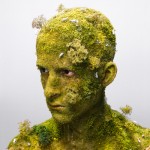

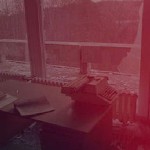



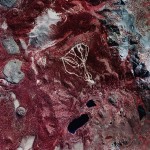
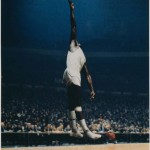
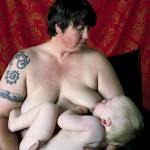
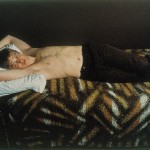



Pingback: 23.01.10ICA warns staff it could close | aaaaarte | Revista crítica de arte